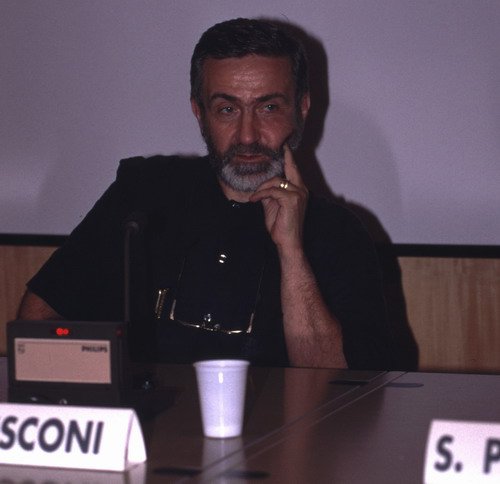Tempus Temple
‘Taking into consideration only the geographical area of Italy, with a few exceptions, the exhibition centres on the ways of translating the conception of time and the distinction between the sacred and the profane into constructive phenomena according to the definition of religious sense in those conceptions generically called pagan and Christian. For this purpose, artifacts of culturally and architecturally “mature” periods are displayed such as those of the Vulgar era, for the pagan temples, and those known as the Romanesque period, for the Christian churches, in this case too with some exceptions. The first fundamental point which emerges concerns the difference in the relation between sacred and profane. In fact, in sacred pagan buildings there is a clear separation between sacred and profane, and a similar separation is present in the Jewish religion and mature Judaism, which is reflected in the Jewish place of worship. The “sacred” (numinous, holy, divine) is conceived as “totally different” compared to the world of human beings, which is the profane world, the changing world, the world of that which starts and finishes and which faces the “sacred” with curiosity and fear, otherness and need. This position translates from an architectural point of view into structures that separate the place where the divinity ideally lives, in its effigy or whatever recalls it, and the place where ceremonies take place, from the people who take part in such ceremonies. The home of the “god”, whose presence is perceived as necessary for the stability of the lives of human beings and in general for all things belonging to the human world, is inaccessible, except on rare and limited occasions to specially appointed and consecrated individuals. In sacred Christian architecture, this structure of separation, albeit through a far from linear process, is gradually abolished and the entire populace can directly take part in worship. This process was made possible thanks to the gradual matu-ring of Christian awareness whereby, after the Son of Cod became man a man of flesh like that of any other man or thing belon~m9 to creation, nothing profane exists any lon-ger, nothing extraneous to God, to mystery. The home of the “holy” is human flesh itself, which is no longer profane, and this home extends to all human beings who, by faith and sacrament are in communion with the Son of God become man, thanks to whose sacrifice, the veil of separation between “sacred” and “profane” has been torn down. The second point which emerges from the compari-son between sacred pagan buildings and sacred Christian buildings concerns the different way of looking at “time”. Time, as such, in the pagan way of thinking, was something profane and it was up to human beings to escape it and take refuge in “sacred” time, that of the gods, legendary time, by means of the ritual celebration of the latter, in order to obtain stability, i.e. salvation. There is consequently nothing in pagan buildings of wor-ship which introduces the time of men and creatures into the sacred realm. The pagan temple is a cosmic place of sal-vation of profane reality in the escape from profane time. Here too, the sacred Christian building reflects a growing awareness in believers in Christ; an awareness that in virtue of the Incarnation, i.e. of the fact that God became man in the womb of a woman, then a child, and an adult, time itself became holy and gamed in significance. This time of change for creatures, as the place where salva-tion occurred, is present in all time present and resolves in its own outcome and total significance every fragmentation of time. And so, the sacred Christian buildings, true temples of Cod, into which the believers go, are built as a dual desti-nation: that towards the origins, the East, Christ resurrec-ted origin of new creation; and the subsequent direction towards the West, i.e. towards the realization of origins for all creatures, the end of time and resurrection as judgement under way for everything which occurs in time. For this purpose, the first stage of the exhibition shows the structure of pagan temples in Italy, both Italic and Greek, with a reference appendix relating to the Jewish temple, a second stage shows the evolution of the outer structure of Christian churches, with the gradual elimination of the separating elements between “sacred” and “profane”; a third stage which presents the overcoming of the elements of separation inside the Christian church in Italy as well and the building of that road to salvation which gives sense to mankind’s time. Finally, there are two appendices. One documents the various kinds of churches, with empha-sis on different ways of considering time. The other, through the reuse of buildings, sites and mate-rials, shows how the Christian position does not repudiate the previous attempt on the part of human beings to approximate the mystery; on the contrary, this attempt is enhanced and seen as a demand for significance put to the mystery itself, of which Christ is the total answer.’




